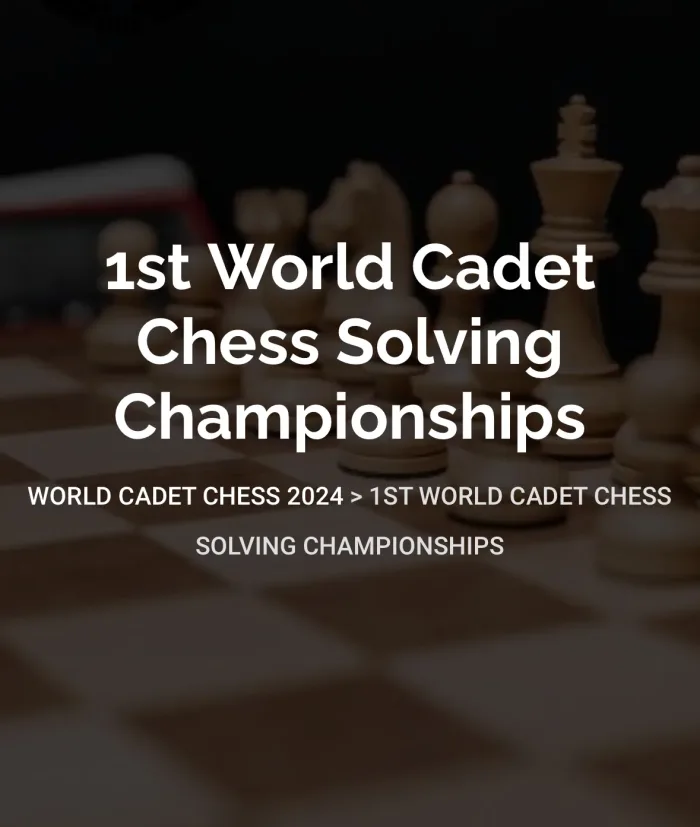1st World Cadet Chess Solving Championships
World Cadet Chess 2024 > 1st World Cadet Chess Solving Championships

Parallel Activities World Cadet Chess 2024
Regulations
This competition will be organized on the morning of 21st November 2024, during the free day of the WCCC 2024, at the same six categories of age and gender as the over-the-board competitions:
U8 (same set of 6 problems for open and girls): 5 problems of mate in 2 moves, 1 study (endgame);
U10 (same set of 6 problems for open and girls): 4 problems of mate in 2 moves, 1 problem of mate in 3 moves, 1 study (endgame);
U12 (same set of 6 problems for open and girls): 4 problems of mate in 2 moves, 1 problem of mate in 3 moves, 1 study (endgame)
For each category, the time of 60 minutes is allotted for solving.
Participants are allowed to move pieces while solving. A solver may use the chess set(s) made available by the organizer, or his/her own set(s).
At the same number of points, the 1st tie-break will be the shorter time used for solving. The 2nd tie-break will be the younger age.
There will be separate standings for open and girls. If a girl wants to compete in the open section, she has to announce this before the tournament.
The number of participants per country is not limited.
Even if the categories would not be scheduled simultaneously, a participant can compete in one category only.
A solver may leave the solving hall only after finishing solving and handing in his solving sheet.
The use of all electronic or technological aids that can help in solving is forbidden, as well as any other kind of unfair behavior.
The solutions are to be written in algebraic notation. It is unacceptable to do it by drawing arrows on diagrams, instead of writing the moves.
A detailed set of regulations and instructions for the solvers will be published on the official site in due time.
Participation fee: 25 €
Annex: Instructions about writing solutions
Each solution starts with a move of White.
Participants are allowed to move pieces on the board while solving.
For two-movers, only the first move of White is written.
For three movers, one should write the first move, the threat (if any), all black defenses, and the second move of White. Writing only the first move of White is not enough to get any point. It is not necessary to list short variations, in which white mates in 2 instead of 3 moves.
In studies, all moves are written until there is a clear win or a draw, depending on what is required in the study.
Each problem carries 5 points. In two moves, only the first move is scored. In three-movers, the threat (if any) and all variations are scored. In studies, only white moves are scored; the closer you get to the final position, the more points you get. Only one, the main variation is scored.
Classical, abbreviated notation is used. Each participant may use a symbol for a given piece, the initial letter of the name of that piece in his (her) own language, or other languages at his (her) choice. Drawing arrows instead of writing will not be acceptable. There will be a field on the answers sheet where he (she) can specify which symbol he (she) is using for each piece.
If two pieces of the same type can come to the same square, it is important to indicate which of the two is in question.
The problems do not have to be solved in order. If someone thinks he (she) has finished before the time is up, he (she) can hand over the sheet with answers, and he (she) will be told how much time has passed.
Time is the first tie-breaker. So, if two solvers have the same number of points, the one who spent less time has the better placement, and if time also is even, the younger competitor will have the advantage.
